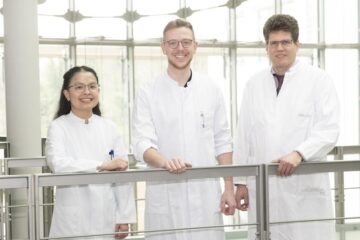International consortium announces the 1000 Genomes Project

Drawing on the expertise of multi-disciplinary research teams, the map developed by the 1000 Genomes Project will provide a view of biomedically relevant DNA variations at a resolution unmatched by current resources. The European Bioinformatics Institute (EBI), working with long-term collaborator the US National Institute of Biotechnology Information (NCBI), will make the data swiftly available to the worldwide scientific community through freely available public databases.
The EBI and NCBI will collect and analyse sequence generated by the Wellcome Trust Sanger Institute, the Beijing Genomics Institute, Shenzhen, China, and the USA’s National Human Genome Research Institute Large-Scale Sequencing Network.
During its two-year production phase, the 1000 Genomes Project will deliver sequence at an average rate of about 8.2 billion bases per day, the equivalent of more than two human genomes every 24 hours. The volume of data – and the interpretation of those data – will pose a major challenge for leading experts in the fields of bioinformatics and statistical genetics.
It’s a challenge that Paul Flicek, lead investigator on the EBI’s part of the project, is eager to rise to. ‘The 1000 Genomes Project represents an important step in relating DNA sequence information to each individual’s risk of disease and response to drugs – we’re on the cusp of building an important bridge between biology and medicine,’ he says.
Contact:
Louisa Wright PhD, EMBL-EBI Scientific Outreach Officer, Hinxton, UK, Tel: +44 1223 494665, www.ebi.ac.uk, louisa@ebi.ac.uk
Anna-Lynn Wegener, EMBL Press Officer, Heidelberg, Germany, Tel: +49 6221 387 452, www.embl.org, wegener@embl.de
Media Contact
All latest news from the category: Life Sciences and Chemistry
Articles and reports from the Life Sciences and chemistry area deal with applied and basic research into modern biology, chemistry and human medicine.
Valuable information can be found on a range of life sciences fields including bacteriology, biochemistry, bionics, bioinformatics, biophysics, biotechnology, genetics, geobotany, human biology, marine biology, microbiology, molecular biology, cellular biology, zoology, bioinorganic chemistry, microchemistry and environmental chemistry.
Newest articles

Airborne single-photon lidar system achieves high-resolution 3D imaging
Compact, low-power system opens doors for photon-efficient drone and satellite-based environmental monitoring and mapping. Researchers have developed a compact and lightweight single-photon airborne lidar system that can acquire high-resolution 3D…

Simplified diagnosis of rare eye diseases
Uveitis experts provide an overview of an underestimated imaging technique. Uveitis is a rare inflammatory eye disease. Posterior and panuveitis in particular are associated with a poor prognosis and a…

Targeted use of enfortumab vedotin for the treatment of advanced urothelial carcinoma
New study identifies NECTIN4 amplification as a promising biomarker – Under the leadership of PD Dr. Niklas Klümper, Assistant Physician at the Department of Urology at the University Hospital Bonn…





















